What is Ripple: Overview, history and XRP cryptocurrency
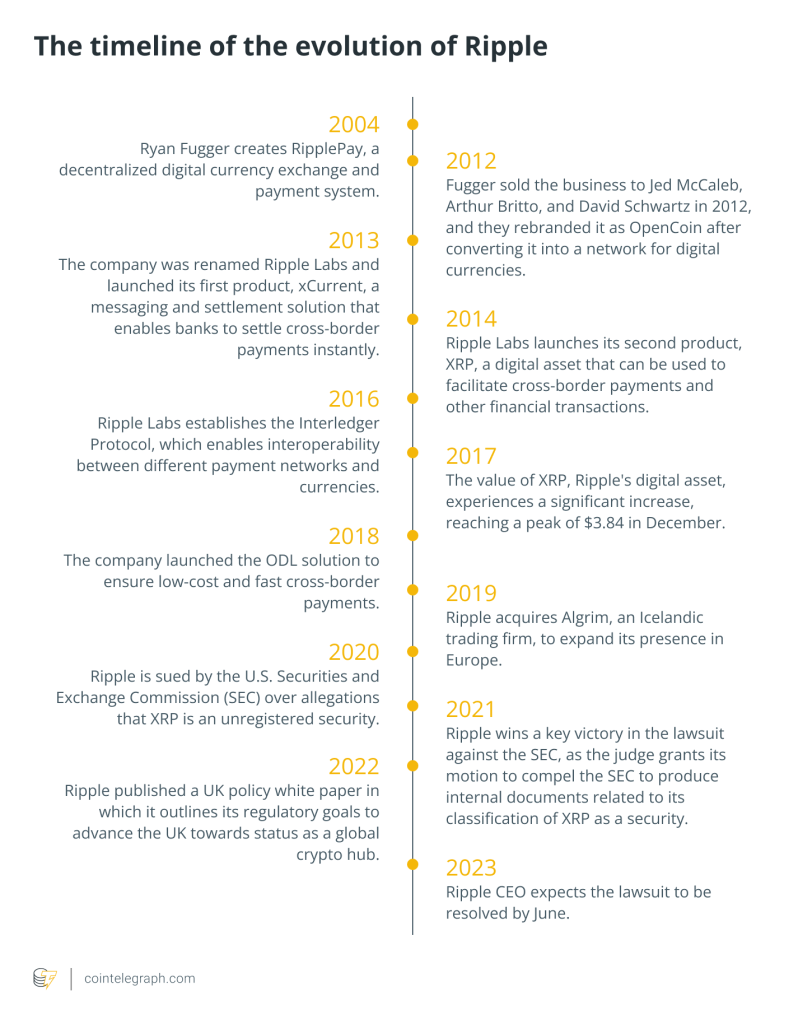

In a more connected global society than ever, with technology rapidly facilitating efficiency to levels unthinkable only a few decades ago, transferring money remains challenging for lengthy cross-border payments.
The reason for such arduous transactions — which are also very costly — is the use of obsolete processes that need to keep pace with financial system innovation, with the lack of proper communication between payment channels slowing the transfer functions.
The Society for Worldwide Interbank Financial Telecommunication (SWIFT) was launched in 1973. Since its launch, SWIFT has provided financial payment services between banks worldwide through a messaging network allowing international payments. However, it does not serve the purpose of clearing or settling transactions, which a third party must perform.
SWIFT has been an inefficient payment system for years due to the multiple transaction layers it requires before reaching the final destination. Blockchain technology helps resolve this inefficiency by allowing faster and cheaper cross-border payments and remittances. Ripple is a distributed ledger technology that may disrupt traditional financial procedures by providing a more efficient, faster and affordable payment network.
How Ripple revolutionizes cross-border payments and remittances
In 2012, Ripple Labs — a United States-based technology company — developed Ripple’s blockchain infrastructure in response to Bitcoin technology. RippleNet, the resulting payment network, was designed to provide banks with a faster, more cost-effective and streamlined option for conducting cross-border transactions. RippleNet is a real-time gross settlement system, a currency exchange and remittance network, and the company behind the XRP ledger (XRPL), which facilitates payments through its XRP (XRP) cryptocurrency.
RippleNet represents an alternative to the SWIFT network, aiming to transform and speed up cross-border funds transfer through blockchain technology. By removing the multiple layers necessary for SWIFT to operate, RippleNet enables an end-to-end transfer process lasting minutes, and provides transaction transparency and near instantaneous settlement status.
RippleNet was initially broken down into a few different offerings:
- xCurrent, which is a bank-focused payment system
- xRapid liquidity provider through XRP
- xVia, allowing customers to connect and combine the previous two services via its application programming service (API) — a set of tools for building application software
In late 2019, Ripple unified the three different products under the same umbrella offered by RippleNet to expand the usage of the XRP digital asset as one way of sending funds.
Ripple uses the interledger standard, a blockchain protocol for payments across different networks connecting the ledgers of two or more banks, thereby removing intermediaries and central control from the system. Like the internet TCP/IP protocol, which allows different computers and systems to communicate, the interledger enables interconnected ledgers to communicate, reducing costs and the lengthy process of existing cross-border transactions.
The participating ledgers can use financial institutions’ networks or become part of a network of trusted nodes — among other entities. When initiating a payment transaction, RippleNet will automatically find the fastest way to transfer value between the sender and the recipient banks, and calculate the payment costs. This is done following compliance assessment and account verification checks performed by each bank through existing message types such as SWIFT FIN or ISO 20020, pre-validating the payment and facilitating a smooth transfer.
During the transaction process, funds are locked securely on the participating banks’ ledgers, which act as escrow accounts until the transaction executes or fails if specific criteria are unmet.
At that point, Ripple shares the transaction outcome with the bank, which updates its ledgers.
History of Ripple
In early 2011, computer engineers David Schwartz, Jed McCaleb and Arthur Britto became interested in Bitcoin. Still, they were driven by creating a more sustainable system for sending value without the mining factor. Hence, in June 2012, they launched the XRP Ledger and, subsequently joined by angel investor Chris Larsen, started the Company NewCoin, which was soon renamed OpenCoin — before finally settling on Ripple.
One of Ripple’s founders, Jed McCaleb, left the company in 2014 to build a similar network called Stellar (XLM). Before leaving the company, he was given 9 billion XRP as a reward for developing and founding the company. He later revealed that he had sold his XRP holdings.
Initially, the network included the Ripple Consensus Ledger, The Ripple Transaction Protocol, the Ripple Network and the XRP cryptocurrency used in the Ripple ledger — which later became the XRP Ledger. All these separate entities now converge in RippleNet, including all products and services facilitating global financial transactions.
After the launch of the XRP Ledger, its developers offered 80 billion tokens to Ripple to support the cryptocurrency. Ripple ensured it consistently sold XRP over time and used it to increase liquidity and build robust XRP markets.
In 2020, the independent and nonprofit XRPL Foundation was launched to drive the growth and adoption of the decentralized XRP ledger. It raised $6.5 million to create an XRP Community Fund and improve the XRP Ledger infrastructure.
Grants from Ripple-backed web monetization platform Coil, Ripple, and the internet-of-value platform Gatehub helped expand the foundation’s work and serve the growing number of developers, and other community members, that wanted to build on the XRP Ledger.
The foundation’s work has become an essential component of the whole Ripple ecosystem, granting support for developing a safe and successful XRP Ledger network incorporating developers, public and private enterprises, and social initiatives.
The foundation also ensures that its list of trusted validators can create an efficient and dynamic ecosystem with simple governance and code management in an open-source environment in the true spirit of blockchain technology.

The role of XRP in the Ripple ecosystem
There is often confusion between the XRP token and the Ripple ecosystem; however, these are two distinct entities. Ripple is the network used by banks to settle cross-border and remittance payments, and facilitates the exchange of fiat and digital currencies.
Any currency or asset can be used to transact on the Ripple Network, which doesn’t need XRP to function. However, XRP provides liquidity when necessary, acting as a bridge between two currencies.
Through on-demand liquidity — one of Ripple’s services that use XRP to provide liquidity in cross-border transactions — RippleNet removes the need for pre-funded accounts. Such a solution allowed Ripple to partner with remittance players and banking giants like Santander, Bank of America and American Express.
XRP serves as an intermediate exchange mechanism between two currencies or networks; however, its origin and subsequent role caused some issues with the U.S. Securities and Exchange Commission (SEC). The SEC initiated a lawsuit against Ripple in December 2020 based on allegations that the company and its executives illegally sold XRP to investors without first registering it as a security.
What is XRP?
XRP is Ripple’s cryptocurrency token, which is used to transfer funds across borders at a low cost — trustlessly and instantly. Its primary use is to serve as a bridge currency to offer financial institutions a more cost-effective way to exchange both crypto and fiat currencies.
However, bridging assets with XRP may carry risks for financial institutions dependent on the Ripple network to supply the necessary transfer liquidity. Using XRP and other cryptocurrencies for transfers is even riskier when considering their volatility, which does not make them suitable units of exchange.
Ripple’s selling point for XRP has always been its minimal transaction fees and transactions’ quick settlement status. The minimum transaction cost required by the network for a standard trade is 0.00002 XRP. Another advantage of XRP is its scalability, with 1,500 transactions per second, and its inherently green attributes that make it carbon-neutral and energy-efficient.
XRP is premined, meaning that many of the tokens were created or mined before the project was launched to the public. The company has always assured that the premine solution was necessary to reward the project’s founders, developers and early investors.
How does XRP work?
Like other cryptocurrencies, Ripple’s blockchain maintains an immutable record of transactions through its electronic ledger, the XRP Ledger. The XRPL is also responsible for recording transaction data such as balances, accounts, and transfers and is cryptographically secured with key pairs (private and public keys). The private key holders are the only ones who can approve transactions.
XRP transactions settle in seconds, enabling payments in local currency for both parties and allowing institutions to bridge currencies. Transactions are confirmed by a network of 150+ validators (servers) that may be rewarded a place in Ripple’s Unique Node List.
The Unique Node List includes 35 validators, with Ripple running six of them. Validators must agree on a set of transactions for a particular ledger entry based on the Ripple Protocol Consensus Algorithm (RPCA). The network is in charge of validating all outstanding XRP transactions, on average, every three to five seconds.
Once validated, the transactions are recorded onto the XRP ledger in compliance with the RPCA, and are permanently timestamped on the blockchain to ensure the ledger data entry remains immutable. Consensus is reached when at least 80% of validating nodes agree on the transaction’s legitimacy, and a new block is added to the XRPL blockchain.
There can always be some flawed validators, but they can never exceed 20% of the total. If the number exceeds 20%, the network is challenged and stops functioning.
What is XRP used for?
Ripple created XRP to operate the network as an alternative to SWIFT, offering transaction speed for more efficient international payments and faster cross-border transactions.
Ripple’s token is handy for little-traded currencies that may require an intermediary medium of exchange to be swapped cheaply. That intermediary currency is usually the U.S. dollar, but XRP can replace it for a fraction of the cost per transaction.
Traditional wire transfers may take days to settle and charge high fees. They could be replaced by the Ripple network using XRP for its high transaction speed and low costs.
XRP empowers the open-source XRPL Ledger, a scalable and sustainable blockchain that provides a permanent and immutable record of transactions only authorized by the holder of private keys.
The platform is managed by a community of global developers, leveraging the low cost and fast transfer of value for many use cases. The decentralized exchange (DEX) — the XRPL DEX — is the longest-operating decentralized exchange, enabling users to trade XRP and other cryptocurrencies since 2012 with minimal fees.
The XRP Ledger DEX provides unlimited currency pairs tracked on-demand when users initiate trades. XRPL trades are called “offers,” — a limit order to buy or sell a quantity of one currency (XRP or another token) for a specific amount of another at the best exchange rate available.
Cross-chain bridging solution provider Allbridge integrated support for XRPL in April 2022. It opened new opportunities for Ripple in decentralized finance (DeFi) by linking the platform to the Ethereum Virtual Machine (EVM) and non-EVM compatible chains like Solana, Near Protocol, BNB Chain and Fantom — among others.
How and where to buy XRP cryptocurrency
Due to the ongoing investigation by the SEC, U.S. cryptocurrency exchanges are not allowed to list XRP in their offerings. Elsewhere, XRP can be traded at centralized exchanges, including the following platforms:
- Binance
- Bitfinex
- Huobi
- Kraken
- KuCoin
- OKX
To buy XRP through any of the above exchanges, you must have an account with the chosen platform. Here are the steps required to buy XRP:
- Open an account with a cryptocurrency exchange
- Transfer fiat currency or a cryptocurrency used to purchase XRP
- Move the funds to the platform’s trading account
- Set up a market or a limit order to buy XRP
- Click on “buy” and insert the amount required
- Wait for the transaction to execute
- Move XRP to the platform’s wallet or an external wallet
Moreover, decentralized exchanges like SushiSwap and PancakeSwap also offer XRP trading.
Users can buy and sell XRP using cryptocurrencies, stablecoins and fiat currency pairings through popular cryptocurrency platforms. Some brokers, such as eToro, even allow users to buy XRP with PayPal. Here’s how to buy XRP through a broker:
- Open an account with the broker
- Select the “crypto” section within the platform
- Select XRP from the list of cryptocurrencies available
- Click on “buy” — choose the non-leveraged option
- Insert the amount of XRP you’d like to buy
- Wait for the transaction to execute
- Move your funds to the platform’s wallet or an external wallet
How to mine XRP
XRP is often viewed differently from any other cryptocurrency. Some do not consider XRP as a cryptocurrency at all, and this is because it has a governance protocol that does not require either proof-of-work (PoW) or proof-of-stake (PoS) mining. Instead, it uses the RPCA system without relying on mining to validate transactions like other cryptocurrencies, such as Bitcoin (BTC).
The Ripple protocol verifies transactions and maintains the integrity of the network through a system of trusted validators. If users want to obtain XRP through mining, they must mine other cryptocurrencies like BTC or Ether (ETH) first, then swap the mined coin or token for XRP through an exchange. Users should be cautious when they see recommendations on how to mine XRP, as they are most likely scams.
XRP vs. Bitcoin
Bitcoin is the first cryptocurrency ever created, and all subsequent digital currencies were shaped following its model. However, while Bitcoin was created to contrast the banks’ and governments’ power, XRP aimed to improve the existing financial system by making it more efficient and cheaper.
The main difference between XRP and Bitcoin lies in their governance models. Anyone can contribute to the Bitcoin network by providing computing power, validating transactions and securing its network by running a node. In contrast, only a list of high-profile validators provides transaction verification and confirmation in the Ripple ecosystem. For this reason, many believe XRP is not decentralized like other cryptocurrencies, especially Bitcoin.
Bitcoin is considered decentralized due to its network of distributed and available nodes to anyone who wants to participate in blockchain operations. On the other hand, XRP is centralized to facilitate quicker transaction processing, which is possible because it does not have to rely on PoW mining.
The total circulation supply is another feature that separates the two cryptocurrencies. Bitcoin’s total supply is fixed at 21 million BTC and impossible to change, while XRP’s maximum supply is 100 billion premined coins, and the founders can increase it if they wish. Bitcoin did not have a premine stage — when Satoshi Nakamoto started mining, anyone else could.
Generally speaking, the Bitcoin network has become much more secure than other cryptocurrencies, including XRP, which relies on a small network of selected nodes to validate transactions.
While Bitcoin continues to become a medium of exchange and a store of value, XRP aims to settle cross-border transactions cost-effectively and quickly.
Is XRP a good investment?
There’s never a guarantee that an investment is safe or suitable for making money, especially when it comes to cryptocurrencies. However, there are a few elements that an investor could consider to evaluate if XRP is a suitable investment or not.
Despite its primary goal to disrupt international payments and remittances, XRP has yet to enter mainstream use. The financial institutions that have revealed an interest in Ripple and its technology are still testing the network.
XRP issues with the SEC have undoubtedly slowed its adoption and widespread recognition as a digital currency. Moreover, many exchanges have restricted XRP trading or stopped it completely, like U.S. platforms that have been warned against supporting the cryptocurrency until the lawsuit concludes.
Ripple’s centralization means the network is more open to censorship than other cryptocurrencies, with a few entities controlling it and potentially blocking transactions. On the other hand, for those who prioritize technology efficiency over centralization concerns, XRP could be a worthwhile investment option, given its reputation and trust among financial institutions.
The future of Ripple and its potential impact on the financial industry
Ripple can disrupt international payments and remittances and revolutionize the banking and financial system. It can replace the existing SWIFT network, and provide fast and cheap transactions.
Ripple’s policies and measures aim to impact the financial industry for enterprises and financial institutions rather than retail customers. In 2019, Ripple launched a “Liquidity Hub” for enterprise clients that want to offer crypto trading through access to digital assets from numerous providers, including exchanges, market makers and over-the-counter (OTC) trading desks. Since then, the company has provided access to aggregated liquidity pools, including exchanges and OTC desks, to get optimized pricing.
It developed a streamlined digital asset management to leverage an enterprise-level dashboard for managing, trading and reporting to bridge the new world of digital assets with traditional fiat currencies.
As the cryptocurrency market expands its functionality to DeFi, nonfungible tokens (NFTs and the metaverse, the Ripple ecosystem is working to follow suit, developing projects for NFT issuance, smart contract implementation and the creation of federated sidechains to facilitate integration with other platforms. It launched a creator fund of $250 million to help NFT creators mint their projects onto the XRP Ledger to demonstrate its commitment to the industry.
With the world’s central banks rapidly approaching the testing and launch of central bank digital currencies (CBDC), Ripple has positioned itself as an experienced developer of CBDC applications to help drive the implementation and adoption of these new monetary tools. Ripple offers a platform for minting, managing, transacting and destroying CBDCs based on a ledger that uses advanced technology, enhancing its reputation as a solution to help banks, financial institutions and governments manage the transfer of payments.
In light of Ripple’s existing and future projects, much of Ripple’s adoption and success will depend on the outcome of the SEC’s verdict, although it’s still unclear how long the resolution will take.
Written by Emi Lacapra

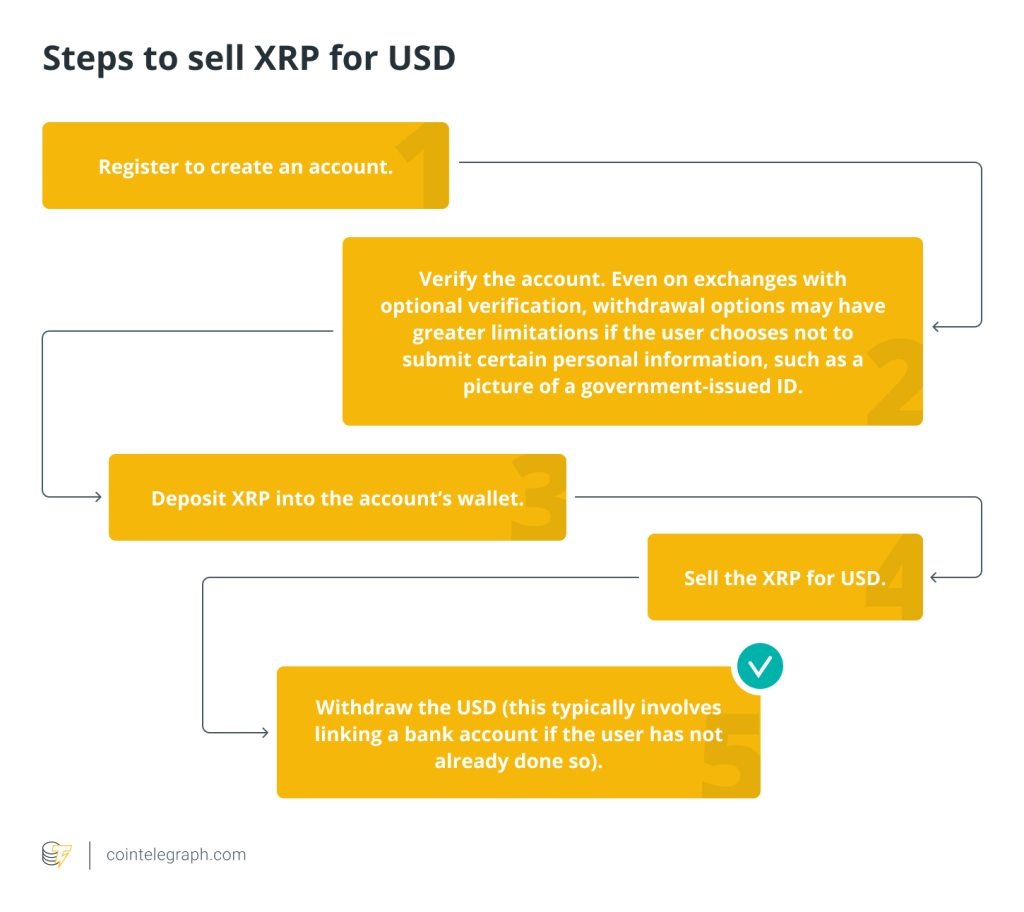
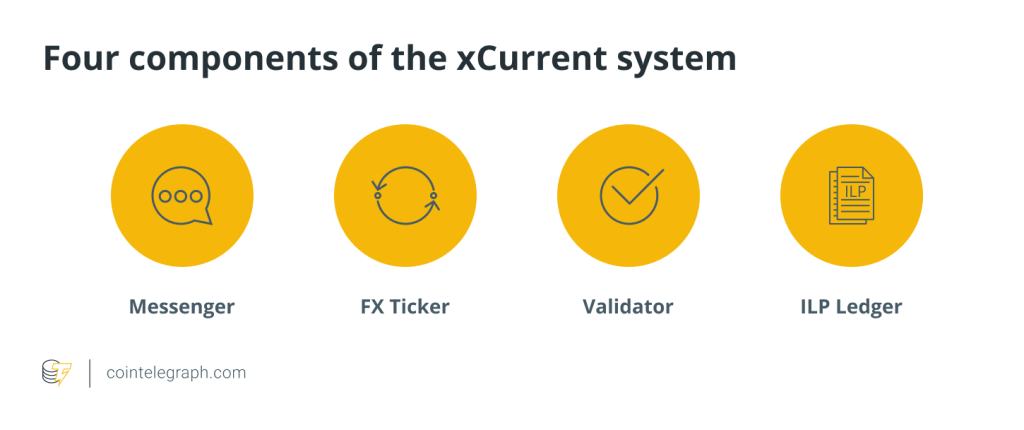
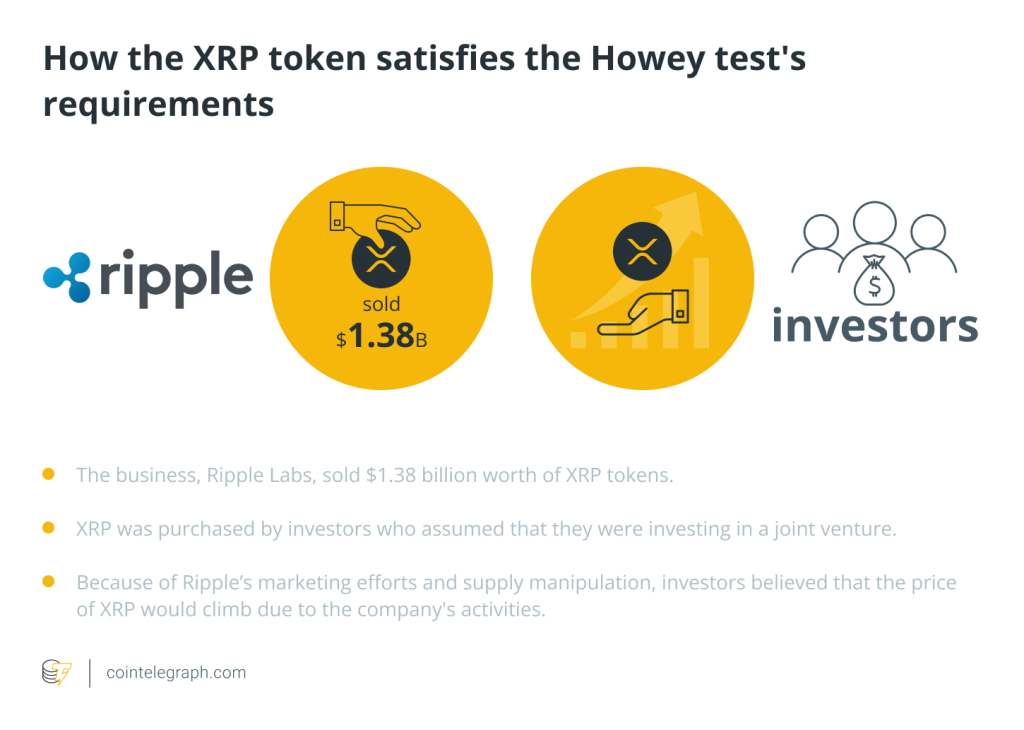
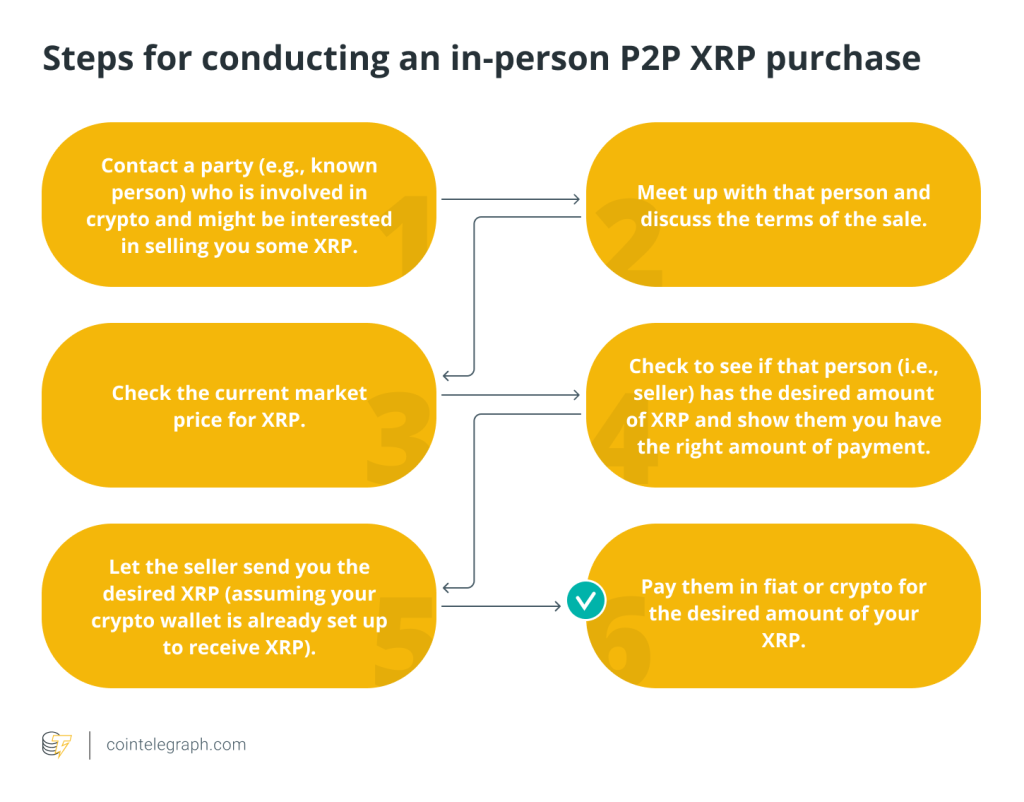
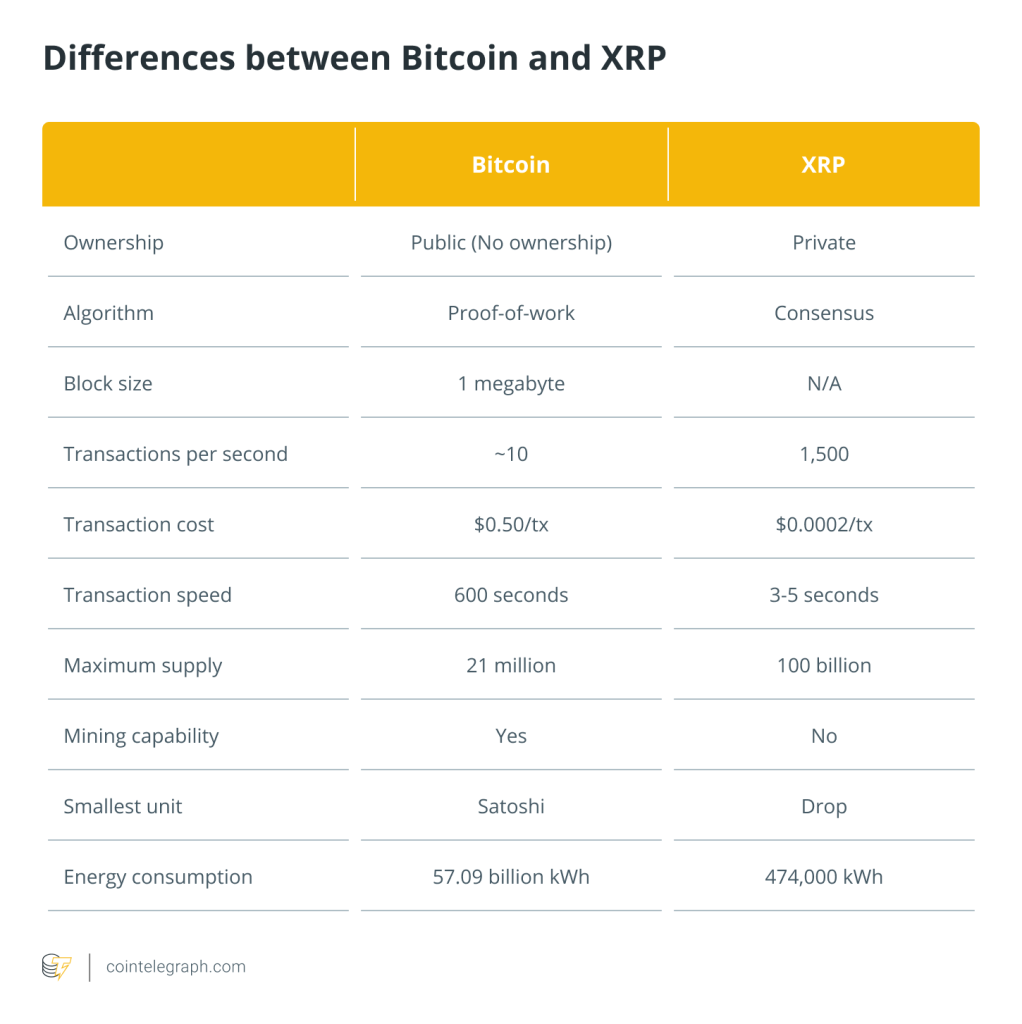
… [Trackback]
[…] There you can find 74956 more Information on that Topic: x.superex.com/academys/beginner/3690/ […]
… [Trackback]
[…] Find More here to that Topic: x.superex.com/academys/beginner/3690/ […]
… [Trackback]
[…] There you will find 97689 more Info on that Topic: x.superex.com/academys/beginner/3690/ […]
… [Trackback]
[…] Info to that Topic: x.superex.com/academys/beginner/3690/ […]
… [Trackback]
[…] Info on that Topic: x.superex.com/academys/beginner/3690/ […]
… [Trackback]
[…] Information to that Topic: x.superex.com/academys/beginner/3690/ […]
… [Trackback]
[…] Find More Information here on that Topic: x.superex.com/academys/beginner/3690/ […]
… [Trackback]
[…] Info to that Topic: x.superex.com/academys/beginner/3690/ […]
… [Trackback]
[…] Find More on on that Topic: x.superex.com/academys/beginner/3690/ […]
… [Trackback]
[…] Find More here on that Topic: x.superex.com/academys/beginner/3690/ […]
… [Trackback]
[…] Here you can find 87676 more Information to that Topic: x.superex.com/academys/beginner/3690/ […]
… [Trackback]
[…] Read More to that Topic: x.superex.com/academys/beginner/3690/ […]
… [Trackback]
[…] Info on that Topic: x.superex.com/academys/beginner/3690/ […]
… [Trackback]
[…] Read More here on that Topic: x.superex.com/academys/beginner/3690/ […]
… [Trackback]
[…] There you can find 58332 more Information to that Topic: x.superex.com/academys/beginner/3690/ […]
… [Trackback]
[…] Here you can find 1412 additional Info on that Topic: x.superex.com/academys/beginner/3690/ […]
… [Trackback]
[…] Find More on that Topic: x.superex.com/academys/beginner/3690/ […]
… [Trackback]
[…] Read More on to that Topic: x.superex.com/academys/beginner/3690/ […]
… [Trackback]
[…] Read More Info here on that Topic: x.superex.com/academys/beginner/3690/ […]
… [Trackback]
[…] Information to that Topic: x.superex.com/academys/beginner/3690/ […]